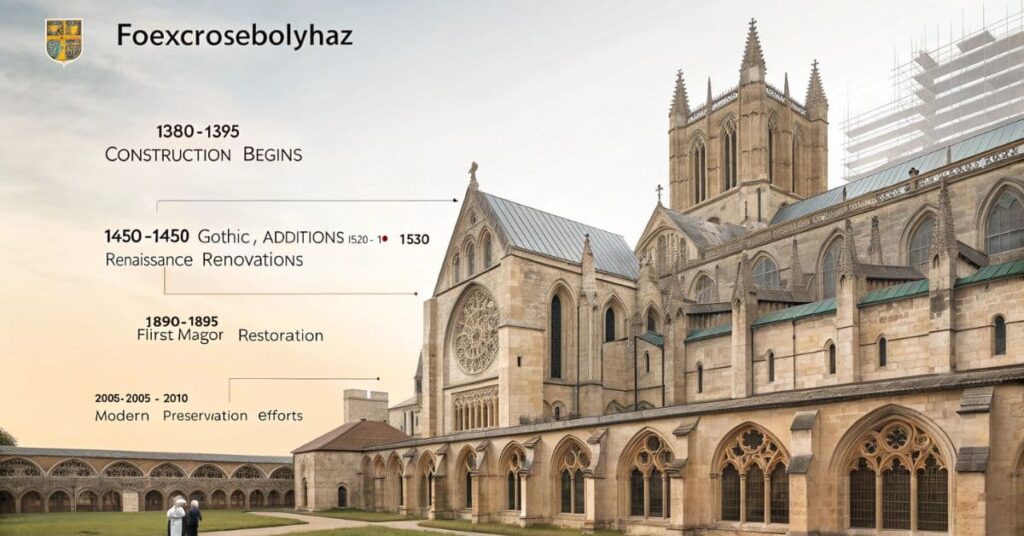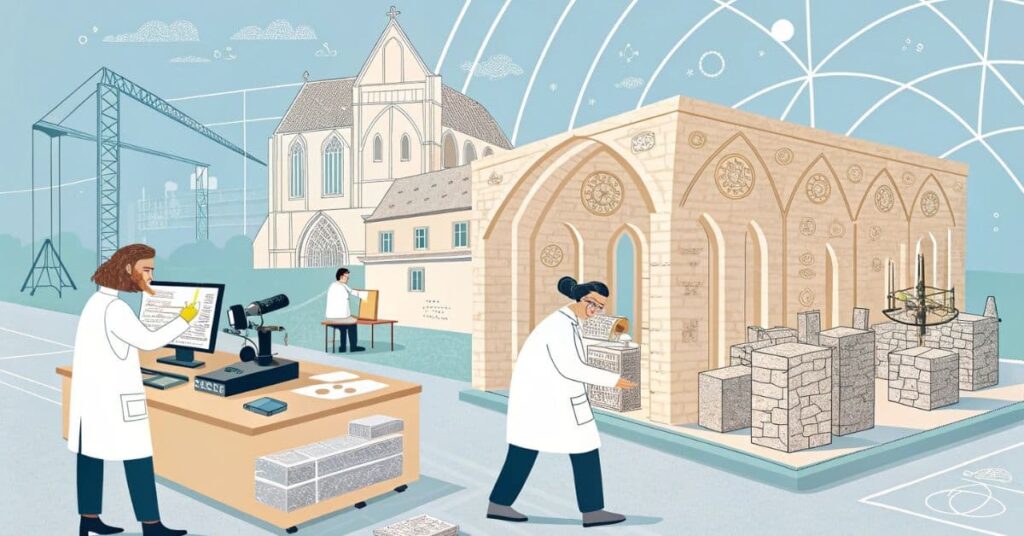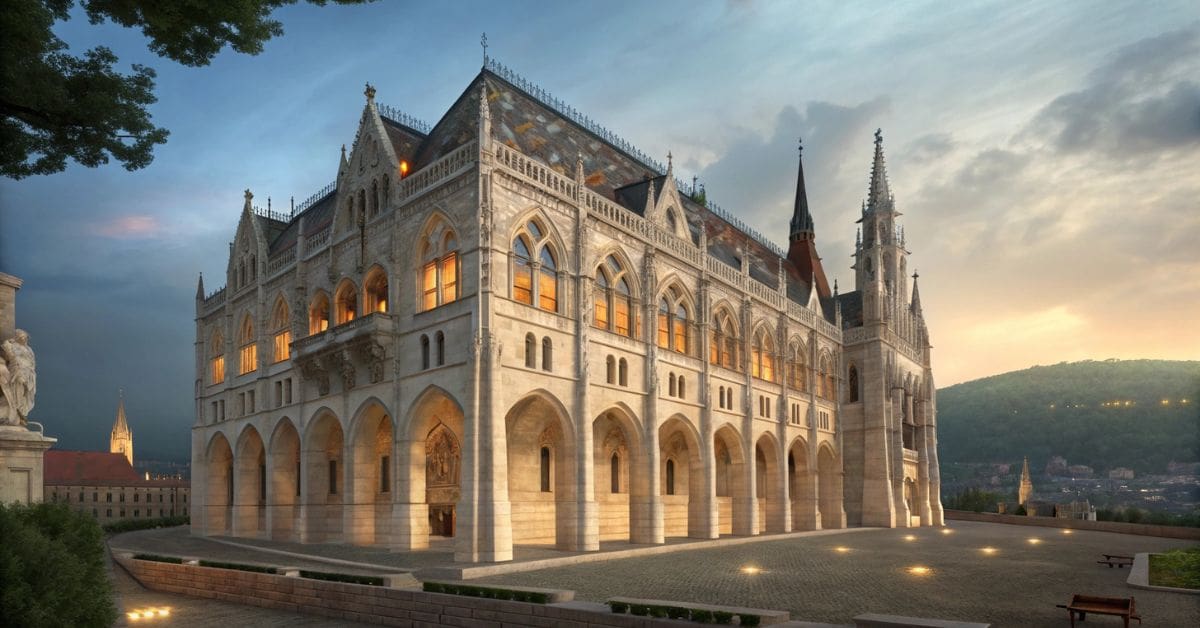Foexcrosebolykaihaz is one of Hungary’s most fascinating historical landmarks. This 14th-century structure, known as the “Cross-bearing House of the Fox,” is an architectural marvel that combines Gothic and Renaissance elements. Over the centuries, it has evolved from a nobleman’s residence to a cultural hub, attracting thousands of visitors annually.
In this article, we will explore the history, architecture, significance, and modern-day applications of Foexcrosebolykaihaz.
What is Foexcrosebolykaihaz?
Foexcrosebolykaihaz is a historic building in Hungary, known for its unique fox carvings and religious symbolism. Built in the late 14th century, it has witnessed centuries of Hungarian history. Today, it serves as a cultural center, museum, and research facility.
Key Features
- Built: 1380-1395
- Size: 2,500 square meters
- Floors: 3 levels with vaulted cellars
- Style: Gothic and Renaissance fusion
- Purpose: Cultural center, museum, and research site
The History of Foexcrosebolykaihaz
Foexcrosebolykaihaz has undergone several transformations since its construction.

Important Historical Periods
| Time Period | Key Events |
| 1380-1395 | Construction begins, noble family residence |
| 1450-1460 | Gothic architectural additions completed |
| 1520-1530 | Renaissance-style renovations introduced |
| 1890-1895 | First major restoration work |
| 2005-2010 | Modern preservation efforts |
Throughout history, this landmark has survived wars, political changes, and natural aging. Its resilience makes it an important part of Hungary’s cultural heritage.
Unique Architecture of Foexcrosebolykaihaz
The building’s design reflects a blend of medieval and Renaissance craftsmanship.
Architectural Highlights
- Limestone Facade: The exterior is crafted from durable limestone, featuring intricate fox carvings that symbolize wisdom and nobility.
- Gothic Arches: These pointed arches, common in medieval churches, highlight the religious and architectural influence of the era.
- Renaissance Courtyard: A spacious open courtyard with grand columns, blending Gothic strength with Renaissance elegance.
- Vaulted Cellars: Originally used for wine storage, these underground chambers help preserve the region’s winemaking heritage.
- Stained Glass Windows: Beautifully designed windows depict religious and historical scenes, adding color and storytelling to the structure.
The Fox Symbolism in Foexcrosebolykaihaz
One of the most intriguing features of the Foexcrosebolykaihaz is the fox emblem, carefully carved into 23 different spots across the structure. This symbol holds deep cultural and historical significance, blending themes of nobility, intelligence, and faith.
What Does the Fox Symbolize?
- Wisdom: Foxes are often associated with intelligence and cunning, symbolizing strategic thinking and adaptability.
- Nobility: Many noble families in Hungary adopted the fox as their crest, representing leadership and aristocratic heritage.
- Religious Meaning: The fox signifies adaptability and survival, mirroring Christian themes of resilience and faith.
The cross-bearing elements throughout the building further emphasize Hungary’s long-standing Christian history and traditions.
Cultural and Historical Importance
Foexcrosebolykaihaz is a key part of Hungary’s heritage, preserving 85% of its original medieval design. It holds rare 15th-century manuscripts, frescoes, and medieval craft exhibitions. Visitors can explore its rich history and architectural beauty.
Beyond its historical charm, the building functions as a research center for scholars. Experts study its architecture and artifacts to uncover more about Hungary’s past. Through conservation and exhibitions, it keeps history alive for future generations.
Inside Foexcrosebolykaihaz: What to Expect
Visitors can explore different sections inside Foexcrosebolykaihaz, each offering a unique look into history. The exhibition halls showcase medieval artifacts and rare manuscripts, while the research laboratory allows scientists to study ancient materials. Experts in the preservation workshop carefully restore old artifacts to keep them in good condition.
For those interested in learning, the educational center offers interactive sessions about medieval history. One of the most fascinating spots is the wine cellar, one of the oldest in Hungary, where visitors can see how wine was stored in ancient times. Each section helps bring the past to life in a meaningful way.
How Foexcrosebolykaihaz is Preserved
Keeping a medieval structure in good condition requires modern preservation methods. Experts use advanced techniques to protect its original design while ensuring it remains safe for visitors. From climate control to digital mapping, each method helps maintain its historical value.
Preservation Techniques Used
- Climate Control: Temperature is kept between 18-22°C to prevent damage to delicate artifacts and building materials.
- UV Protection: Special lighting systems reduce exposure to harmful rays, preserving manuscripts, frescoes, and wooden structures.
- Structural Inspections: Experts regularly examine walls, ceilings, and foundations to detect and repair any weaknesses.
- 3D Mapping: Advanced digital technology creates detailed records of the building, helping with restoration and future conservation.
These techniques ensure Foexcrosebolykaihaz remains a lasting treasure for future generations to explore and appreciate.
How Foexcrosebolykaihaz Influences Modern Architecture
Many construction techniques from Foexcrosebolykaihaz are still used in modern engineering. Its design principles inspire architects to create durable, efficient, and sustainable buildings today. The fusion of medieval and modern technology plays a key role in construction advancements.
Architectural Influence
- Load-bearing designs in modern skyscrapers: The building’s strong stone arches influence the structural support systems in tall buildings.
- Ventilation techniques in industrial buildings: Traditional airflow methods from Foexcrosebolykaihaz inspire natural cooling systems in factories.
- Sustainable construction methods for energy efficiency: Medieval insulation techniques help improve energy-saving designs in modern eco-friendly structures.
Foexcrosebolykaihaz as a Research Center
The building is also a hub for academic research.

Main Research Areas
- Material Science: Researchers study medieval stone preservation techniques to protect historical buildings from erosion.
- Structural Engineering: Experts analyze ancient construction methods to improve modern building durability and stability.
- Digital Documentation: Advanced 3D modeling technology helps create detailed records for restoration and study.
Tourism and Visitor Experience
Tourism
Foexcrosebolykaihaz is a major attraction for history lovers, architects, and tourists. Visitors come from all over the world to explore its rich history, unique architecture, and cultural significance. The site provides an unforgettable experience with a mix of education and entertainment.
- Take Guided Tours: Expert guides provide in-depth knowledge about the building’s history and architecture.
- Attend Workshops: Visitors can learn medieval craftsmanship techniques, such as stone carving and fresco painting.
- Enjoy Cultural Events: Traditional Hungarian music and dance performances bring the past to life.
- Visit the Wine Cellar: Guests can taste historic Hungarian wines in one of the country’s oldest cellars.
Visitor Experience
Tourists who have visited Foexcrosebolykaihaz share their thoughts on the experience:
- “The guided tour was fascinating! I learned so much about medieval architecture.” – Emily, USA
- “Attending a workshop on ancient crafts made me appreciate medieval artistry.” – Mark, Canada
- “The cultural performances were a highlight! It felt like stepping back in time.” – Sophia, UK
- “Tasting the historic wines in the medieval cellar was an unforgettable experience.” – David, Australia
- “A must-visit for history lovers! The preservation work is truly impressive.” – Linda, Germany
Events and Festivals at Foexcrosebolykaihaz
Throughout the year, the building hosts various cultural events.
Popular Events
- Medieval Reenactments: Actors in historical costumes recreate medieval battles, daily life, and royal ceremonies.
- Historical Art Exhibitions: Displays feature medieval paintings, frescoes, and ancient manuscripts preserved over centuries.
- Traditional Hungarian Music Concerts: Musicians perform folk and classical pieces using authentic medieval instruments.
- Educational Lectures on Architecture: Experts discuss the building’s construction techniques and its influence on modern design.
How Foexcrosebolykaihaz Supports Education
Foexcrosebolykaihaz plays a key role in education by offering hands-on learning experiences. Students and researchers can explore medieval history, architecture, and preservation techniques through interactive programs. The site provides a unique way to study historical artifacts and ancient construction methods.
It features multimedia classrooms, live restoration demonstrations, and access to historical archives. Students can also participate in research projects, helping to preserve history while gaining valuable knowledge. These educational opportunities make Foexcrosebolykaihaz an important center for learning and cultural heritage.
The Challenges of Preserving Foexcrosebolykaihaz
Despite its beauty, maintaining this landmark is not easy.
Main Challenges
Maintaining Foexcrosebolykaihaz comes with several challenges that require careful planning and resources. These issues impact preservation efforts, visitor access, and long-term sustainability.
- High Maintenance Costs: Regular restoration and climate control systems require significant funding.
- Strict Preservation Laws: Historical regulations limit modifications and modernization efforts.
- Visitor Capacity Limits: Only a fixed number of guests can enter daily to protect the structure.
- Weather and Environmental Damage: Rain, humidity, and temperature changes can weaken the building over time.
Future Plans for Foexcrosebolykaihaz
Foexcrosebolykaihaz is dedicated to preserving its rich history while making it more accessible. Plans include modernizing the site with new technology, improving visitor experiences, and ensuring long-term conservation. These efforts will help future generations explore and learn about this remarkable landmark.
Upcoming projects include digitizing all historical manuscripts, expanding visitor capacity, and introducing interactive virtual reality tours. Climate control systems will also be upgraded to better protect ancient artifacts. These improvements will balance preservation with innovation, keeping the site both educational and engaging.
15. FAQs About Foexcrosebolykaihaz
Q1: Where is Foexcrosebolykaihaz located?
It is situated in Hungary’s historic district, attracting tourists worldwide.
Q2: Can I visit Foexcrosebolykaihaz?
Yes! Guided tours are available for visitors.
Q3: What makes Foexcrosebolykaihaz unique?
Its mix of Gothic and Renaissance architecture, fox carvings, and medieval history set it apart.
Q4: Is there an entry fee?
Yes, but it varies based on guided tours and events.
Q5: How is Foexcrosebolykaihaz being preserved?
Through climate control, digital documentation, and structural maintenance.
Conclusion
Foexcrosebolykaihaz is a treasure of Hungary’s rich history. Its unique architecture, deep cultural significance, and modern research contributions make it a must-visit landmark. Whether you’re a history enthusiast, an architecture lover, or a curious traveler, Foexcrosebolykaihaz has something fascinating to offer.
Read Also:





